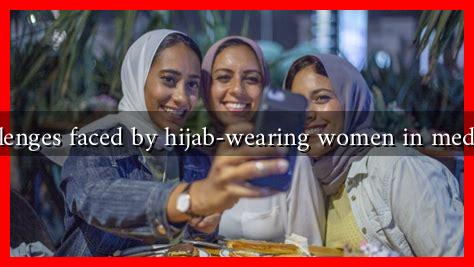-
Table of Contents
What are the Challenges Faced by Hijab-Wearing Women in Media Representations
The representation of hijab-wearing women in media has been a topic of significant discussion and debate in recent years. As societies become increasingly diverse, the portrayal of Muslim women, particularly those who wear the hijab, has garnered attention for both its challenges and implications. This article explores the various challenges faced by hijab-wearing women in media representations, highlighting the stereotypes, biases, and the impact of these portrayals on public perception.
Understanding Media Representation
Media representation refers to the way in which different groups, communities, and individuals are portrayed in various forms of media, including television, film, news, and social media. For hijab-wearing women, representation is often fraught with challenges that can perpetuate stereotypes and reinforce societal biases.
Stereotypes and Misconceptions
One of the most significant challenges faced by hijab-wearing women in media is the prevalence of stereotypes. These stereotypes often reduce complex identities to simplistic narratives. Common misconceptions include:
- Oppression: Many media portrayals depict hijab-wearing women as oppressed or submissive, ignoring their agency and individuality.
- Monolithic Identity: The media often presents hijab-wearing women as a homogenous group, failing to recognize the diversity of cultures, beliefs, and experiences among them.
- Victimhood: Hijab-wearing women are frequently portrayed as victims of their circumstances, which can overshadow their achievements and contributions to society.
These stereotypes not only misrepresent hijab-wearing women but also contribute to a broader narrative that can influence public perception and policy.
Underrepresentation in Mainstream Media
Another challenge is the underrepresentation of hijab-wearing women in mainstream media. When they are included, it is often in a limited capacity. According to a study by the Geena Davis Institute on Gender in Media, only 1.6% of characters in family films were depicted as Muslim, and even fewer were hijab-wearing women. This lack of representation can lead to a sense of invisibility and alienation among hijab-wearing women.
Negative Media Coverage
Media coverage of hijab-wearing women is often skewed towards negative narratives, particularly in the context of terrorism and extremism. This association can lead to increased stigma and discrimination against Muslim women. For instance, during the coverage of events like the Paris attacks in 2015, hijab-wearing women were often portrayed in a negative light, reinforcing harmful stereotypes.
Social Media and Self-Representation
While traditional media often fails to represent hijab-wearing women accurately, social media has emerged as a platform for self-representation. Many hijab-wearing women are using platforms like Instagram and TikTok to share their stories, challenge stereotypes, and promote positive images of themselves. This shift allows for a more nuanced understanding of their identities and experiences.
Case Studies: Positive Representations
Despite the challenges, there are notable examples of positive representations of hijab-wearing women in media:
- Ramy: The Hulu series features a hijab-wearing character who is portrayed as a complex individual navigating her faith and identity.
- Ms. Marvel: The Disney+ series showcases a Pakistani-American superhero who wears the hijab, presenting a relatable and empowering image for young Muslim girls.
These examples highlight the potential for media to challenge stereotypes and provide more accurate representations of hijab-wearing women.
Conclusion
The challenges faced by hijab-wearing women in media representations are multifaceted, encompassing stereotypes, underrepresentation, and negative portrayals. However, the rise of social media offers a glimmer of hope, allowing these women to reclaim their narratives and present their identities authentically. As society continues to evolve, it is crucial for media creators to recognize the importance of diverse and accurate representations. By doing so, they can contribute to a more inclusive and understanding world.
For further reading on this topic, you can explore resources such as the Geena Davis Institute on Gender in Media and various academic studies that delve into media representation and its impact on societal perceptions.


